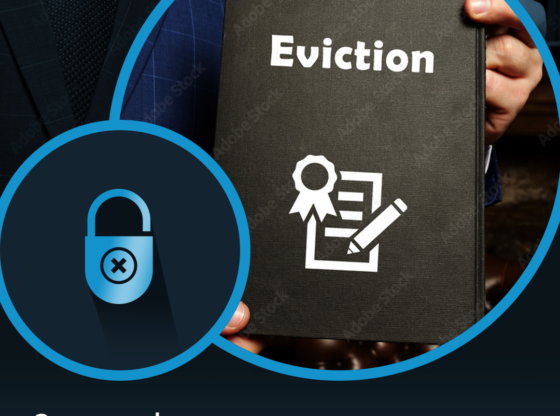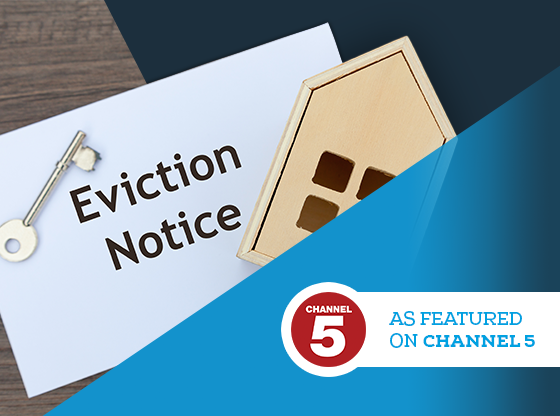Recovering Commercial Rent Arrears
Government plans to “ring-fence” Covid-rent arrears and introduce a binding arbitration scheme.
The current moratorium preventing landlords seeking forfeiture of leases, issuing winding-up petitions or utilising the Commercial Rent Arrears Recovery scheme in relation to Covid-based rent arrears is scheduled to come to an end on 25 March 2022. However, that is not the end of the restrictions on recovering commercial rent arrears.
In June this year the government announced that new rules would be introduced to ring-fence COVID-19 commercial rent arrears and to introduce a binding arbitration process to resolve disputes where agreement cannot be reached. This was followed up by a more detailed policy statement in August. Then, after much anticipation, on 9 November BEIS issued:
- a new Code of Practice (Code), to replace the Code of Practice for commercial property relationships, published on 19 June 2020 and updated in April 2021; and
- a draft Commercial Rent (Coronavirus) Bill, to introduce the mandatory binding arbitration procedure.
The stated aim of the Bill is to support the resolution of commercial rent debt accrued during the COVID-19 pandemic. Once the Bill becomes law, it will introduce a system of legally binding arbitration for England and Wales. It is currently expected to come into force from 25 March 2022. The Bill will apply in respect of:
- unpaid rent arrears relating to the ring-fenced period during which tenants were mandated to close their premises or cease trading (in whole or in part) during the COVID-19 pandemic; and
- tenants who lease their premises under a business tenancy.
The ring-fenced period is from 21 March 2020 until the last date restrictions were removed from the relevant business tenant’s sector. So that will be until the earlier of (a) 18 July 2021 and (b) the last day on which the relevant tenant’s business was subject to restrictions. This will vary from sector to sector, a full list of dates is set out in Annex A of the new Code.
The detail of the new arbitration process is covered below. Other key points to note from the Bill include:
- The scheme will apply to all amounts due under business tenancies during the ring-fenced period including rent, service charge, insurance and interest – debts accrued at other times are not in scope.
- The Bill will prevent certain remedies and measures (including forfeiture and CRAR) from being exercised in relation to the ring-fenced debt from commencement of the Bill until (a) a settlement has been reached, or (b) the date six months after commencement of the Bill, if an application for arbitration has not been made by that date.
- The Bill will prevent landlords from issuing debt proceedings to enforce any ring-fenced rent debt whilst arbitration is available (6 months from commencement of the Bill) or ongoing. This is not restricted to actions against tenants, guarantors will also benefit from this moratorium on proceedings. The Court is obliged to stay any proceedings issued after 10 November 2021 (but before the Bill is passed) if either party apply for this. Further any part of such a judgment obtained on or after 10 November cannot be enforced during this moratorium period.
- Landlords will be prevented from drawing down on tenancy deposits to cover outstanding ring-fenced arrears.
The new Code of Practice
The new Code is intended to govern negotiations between landlords and tenants pending the draft Bill coming into force and to provide a framework for the new arbitration process once the legislation is passed, to be read alongside the key provisions in the Bill. The Code applies to all commercial leases held by businesses which have built up rent arrears due to an inability to pay, as a result of the impact of the pandemic. It is not binding but parties are strongly encouraged to adhere to it. The hope is that the Code will encourage outstanding debts to be settled before the arbitration process comes into force; arbitration is seen as a last resort.
Headline points from the new Code:
- Where it is affordable, a tenant should aim to meet their obligations under their lease in full. Any relief given should be no greater than necessary.
- Tenants who are unable to pay in full should, in the first instance, negotiate with their landlord in the expectation that the landlord will share the burden where they are able to do so. Note that landlords sharing the burden is expected.
- The preservation of the tenant business’ viability should not come at the expense of the landlord’s solvency – however tenants should never have to take on more debt or restructure their business in order to pay their rent.
- Negotiation is encouraged – where parties reach a legally binding agreement, the arbitration process will not override this. If agreement cannot be reached alternative methods such as third party mediators should be considered.
- Where a landlord and tenant are unable to reach agreement by negotiation, they may be able to apply for the new binding arbitration process. However negotiation is encouraged even once arbitration has begun.
The binding arbitration process – how will it work?
- After the Bill is passed there will be a six-month application window for parties to apply for arbitration – so until 25 September 2022, if the legislation is enacted on time. This may be extended by the Secretary of State.
- Before the arbitration proceeds, the arbitrator must assess the viability of the tenant’s business, and if it is determined that the business (a) is not viable, and (b) would not be viable even if the tenant were to be given relief from payment of any kind, the arbitrator must make an award dismissing the reference. There are criteria for assessing ‘viability’ and ‘solvency’ in clause 16 of the Bill. These include assessments of the tenant’s assets and liabilities, any other tenancies the tenant may have, and any financial information the arbitrator considers appropriate.
- The arbitrator needs to follow a set of principles contained in clause 15 of the Bill (Arbitrator’s principles). These state that any award should be aimed at preserving the viability of the business of the tenant, so far as that is consistent with preserving the landlord’s solvency, and that otherwise the tenant should be required to meet its payment obligations in full and without delay.
- The binding arbitration process will have prescribed stages and timeframes, a helpful visual representation of this is set out in Annex C of the Code.
- A reference to arbitration can be made by either the landlord or the tenant (there is no suggestion that applications can be made by guarantors) and must include a formal proposal for resolving the matter which must be supported by evidence, the counterparty will have 14 days to submit its own proposal. The parties can agree to a hearing (either public if either party requests it or private) or for the arbitrator to reach their decision based on the information provided. The arbitrator has up to 14 days from a hearing, or as soon as reasonably practicable if not, to consider the evidence and come to a decision which will be legally binding. The arbitrator’s award must be published (but any confidential information can be redacted).
- Where both parties put forward final proposals the arbitrator must make the award which is most consistent with the Arbitrator’s principles. If only one party puts forward a final proposal, the arbitrator must make that award if it is consistent with the Arbitrator’s principles. Otherwise the arbitrator can make whatever award it considers appropriate.
- The arbitration award may give relief from the debt or state that no relief is to be given. It can write off the whole or part of the debt. The tenant may be given time to pay – up to a maximum of 24 months – and allowed to pay in instalments. Interest can be reduced or written off.
- Fees payable for arbitration will be set by the approved arbitration bodies and payable in advance by the person making the reference. If successful part of the fees will be recoverable from the other party. The Secretary of State will have power to set limits of fees.
- Arbitration bodies will have to demonstrate that they are competent to supply arbitration dispute resolution services. This competency will be assessed by BEIS. A list of approved arbitrators will be published in due course. Any application will be made directly to the chosen arbitrator.
- Lenders are expected to continue to demonstrate forbearance to their borrowers during the period in which arbitration is in effect.
It is also worth noting that the new arbitration process cannot be used where the tenant that owes a protected rent debt is subject to, in respect of the protected rent debt, (i) an approved CVA; (ii) an individual voluntary arrangement or (iii) a sanctioned compromise or arrangement. Tenants that have entered the arbitration system may not include the ring-fenced rent debt in any CVA, restructuring plan or scheme of arrangement after an arbitrator is appointed and for a period of 12 months, beginning when the arbitration settlement is awarded.
Which arrears are covered by the Bill?
It is thought that qualifying “protected rent debts” will include rents, service charges, insurance rents and interest which fell due under a business tenancy in the period beginning on 21 March 2020 and ending on the last day restrictions were removed from the sector in which the business operates.
Importantly, the Bill only applies to those businesses which were legally required to close during the pandemic, including leisure, hospitality and non-essential retail businesses (please see Annex A of the Code: Code of practice for commercial property relationships following the COVID-19 pandemic – GOV.UK (www.gov.uk)). Businesses such as offices and pharmacies do not appear to be included within the scope of the Bill.
In addition, the tenant must have been “adversely affected by coronavirus”. A tenant will satisfy this requirement where it has a business tenancy and was mandated to suspend trading (in whole or part) or to close its premises.
Arbitration
If the parties are unable to reach agreement in relation to the payment of “protected rent debts” then either party may apply, within 6 months from the date the proposed law comes into effect, for the matter to be determined by an arbitrator.
In reaching an award, the arbitrator must strike a balance between preserving / restoring the viability of the tenant’s business and protecting the landlord’s solvency. Whilst larger institutional landlords will find it hard to argue that their solvency will be impacted, smaller landlords who, for example, own just 1 or 2 commercial properties as an investment for retirement may well be able to demonstrate financial hardship if the arrears are written off or are to be repaid over too long a period.
Relief granted by the arbitrator may include writing off some or all of the arrears, allowing the tenant more time to pay (to a maximum repayment period of 24 months) and / or reducing any interest payable.
Restrictions on enforcement options
Once the new law comes into effect, all other enforcement options for arrears (including issuing a debt claim) will be stayed until either the arbitration has concluded or the 6 month period for commencing the arbitration has expired.
New debt claims can still be issued until the new law comes into effect. However, such proceedings will be stayed on the application of either party.
What can a landlord do now?
Landlords should think carefully before issuing a debt claim for arrears as their tenant is likely to apply for such proceedings to be stayed.
Landlords should consider whether the arrears due to them are likely to meet the criteria under the proposed new law and may wish to seek advice in this respect. Similarly, landlords may wish to seek advice now as to the balance to be struck by the arbitrator and the extent to which this may work in their favour, or not, and whether it would be better, quicker and cheaper to enter into negotiations now with its tenant in relation to the arrears.
Source: PDT Solicitors/Fresh Fields











